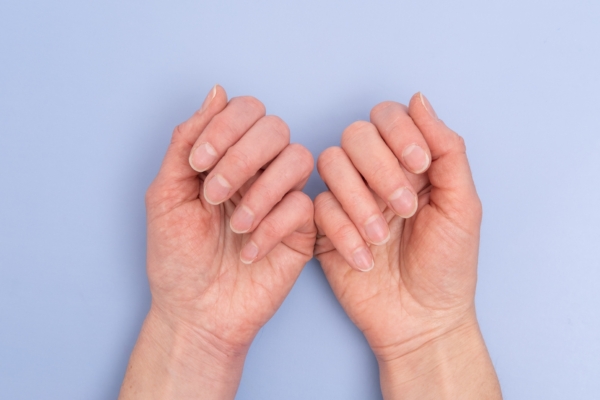People often say, “The devil is in the details.” By observing the subtle signs of things, one can understand their essence and development trends. Experts say that the state of one’s health can be reflected by something as small as their fingernails; therefore, it is important not to overlook them and to pay attention to any messages they may convey about one’s health.
Dan Baumgardt, a senior lecturer in pharmacology and neuroscience at the University of Bristol in the UK, wrote in an article on The Conversation website that toes and nails are extensions of the skin, much like hair, and they can reveal important information related to health.
Toes and nails are formed by keratin, a tough material that grows into hard plates along the fingertips. The cuticle, covering the skin at the junction of the skin and nails, provides additional protection against injury and infection.
Baumgardt highlights that any changes in the appearance and texture of nails can provide crucial clues about one’s health condition. Here are some key points to pay attention to:
– Normally, toenails and fingernails should have a slight convex curve without any depressions. In contrast, people with spoon-shaped nails (koilonychia) will have a central depression in the nail that is deep enough to hold a drop of liquid, resembling a spoon with medication. Nails affected by this condition also tend to appear thinner and more brittle.
– Spoon-shaped nails may indicate anemia, a condition where there are not enough red blood cells in the bloodstream to adequately supply oxygen to body tissues, often linked to iron deficiency. This deficiency can result from malnutrition, coeliac disease, or gastrointestinal cancers.
Mechanics and hairdressers, due to exposure to petroleum-based solvents in machine oil and hair straightening agents, are particularly susceptible to spoon-shaped nails. However, there are various underlying causes for this condition, so seeking medical advice is recommended for persistent cases.
– Under normal circumstances, the nail bed beneath the nail should exhibit a uniform pink color. Diseases or infections could cause discoloration in the nail bed or the entire nail. For example, yellow nails might indicate fungal infections or changes resulting from conditions like psoriasis.
– Leukonychia, or white spots on the nails, can manifest in different forms. In some cases, white streaks on the nails could indicate heavy metal poisoning from substances such as lead or arsenic. In many countries, contamination of water systems by these metals remains a concern.
– If the entire nail appears white, and this is observed on multiple nails, it could signify a protein deficiency in the circulatory system, possibly indicating liver or kidney diseases.
– Small white marks on the nails are likely the result of traumatic injury, such as stubbing toes or fingers caught in a door. Even common habits like nail-biting and excessive nail care can lead to nail damage.
– Nail discoloration to deep purple, blue, or red following trauma from stubbing a toe or catching a finger in a door may lead to subungual hematoma, where blood collects between the nail and the nail bed due to trauma. While this condition often heals on its own over time, it may also prompt infections or separation of the nail from the nail bed.
During emergencies, doctors often check patients’ nail oxygen saturation. Pressing on the nail can be used to assess patients who feel drowsy or have lost consciousness. The capillary refill time (CRT) test examines a patient’s blood circulation function.
CRT involves pressing on a patient’s nail or fingertip for 5 seconds, causing the skin underneath to turn white. After releasing the pressure, the skin should return to its original color within 2 seconds.
Exceeding this timeframe may indicate dehydration, coldness, poor peripheral perfusion, or insufficient blood pump function, hindering blood flow to the body’s extremities.
Apart from the aforementioned conditions, Baumgardt reminds that there are several other nail issues to be aware of, such as nail breakage, nail pitting, or wrinkling. If you notice changes in the color or shape of your nails, it is essential to have your family doctor evaluate them.
He concludes with a warning, “Artificial nails or nail polish can mask significant changes. Therefore, be cautious about modifying your nails and pay attention as they might provide insights into your health.”
Changes appearing on nails or toenails may also serve as indicators of infections like the novel coronavirus disease (COVID-19) or other contagious diseases, which might often go unnoticed by people.
Dr. Karan Raj from the National Health Service (NHS) in the UK pointed out that sometimes individuals observe a horizontal line on their fingernails or toenails known as Beau’s lines, which could be signs of the body fighting off certain diseases such as COVID-19.
He mentioned, “Scientists have noticed that when patients recover from a COVID-19 infection, they may develop a clear or white horizontal line on their nails, causing an uneven surface.”
He clarified that these lines are typically “harmless,” and their presence does not definitively prove a COVID-19 infection, as they can arise from various triggers, with COVID-19 being just one of them.

